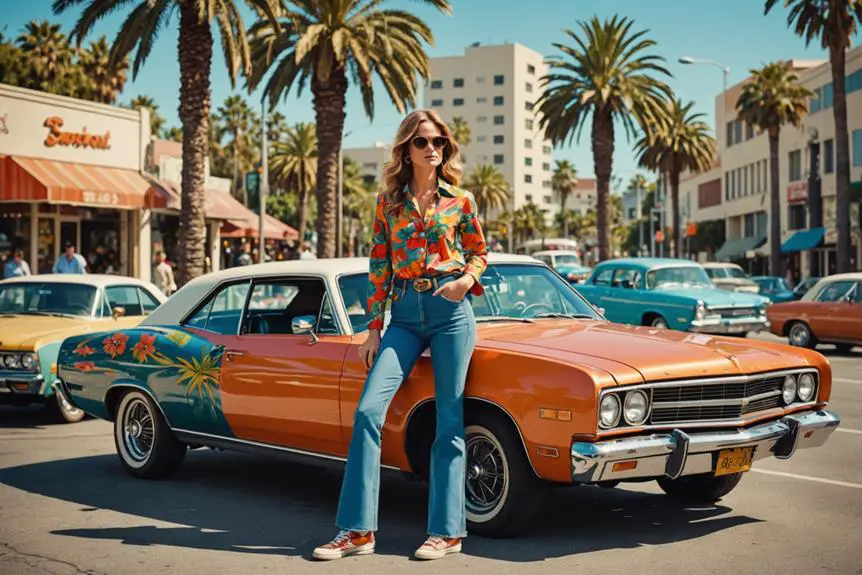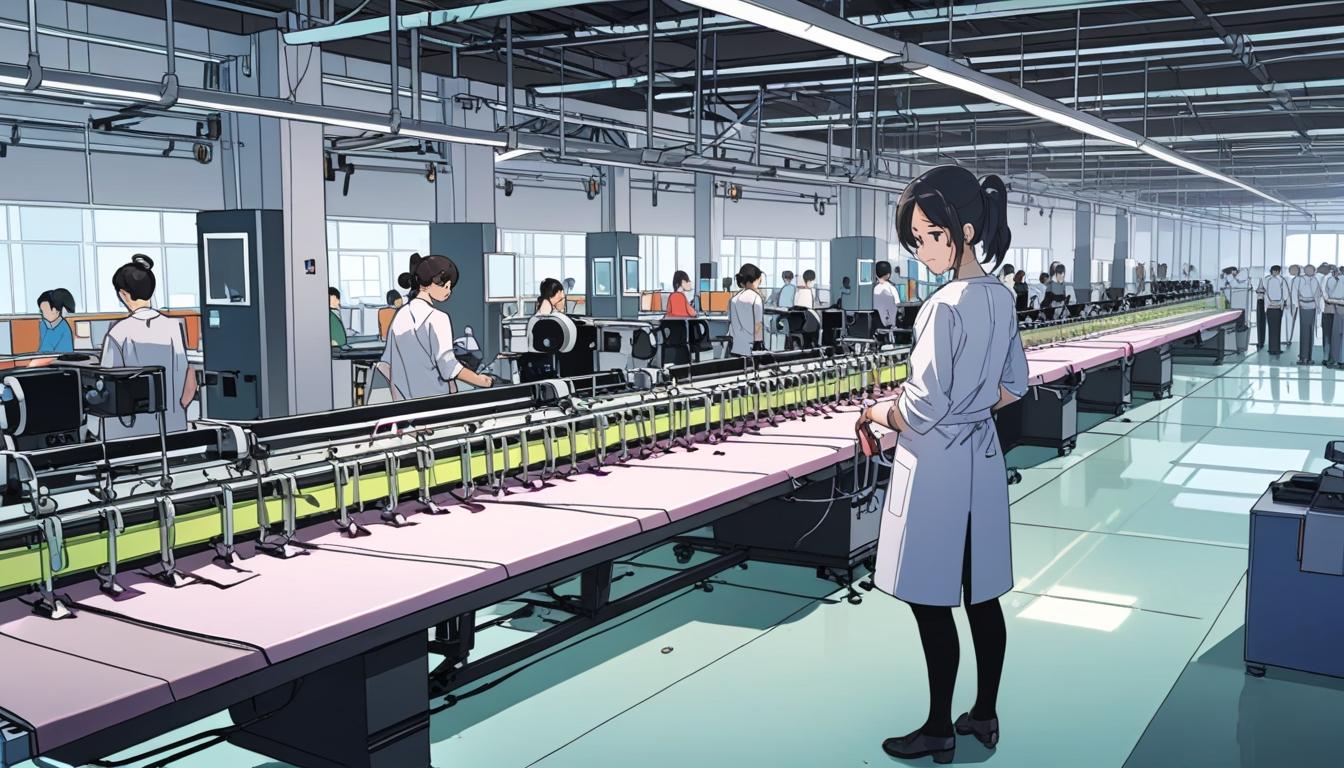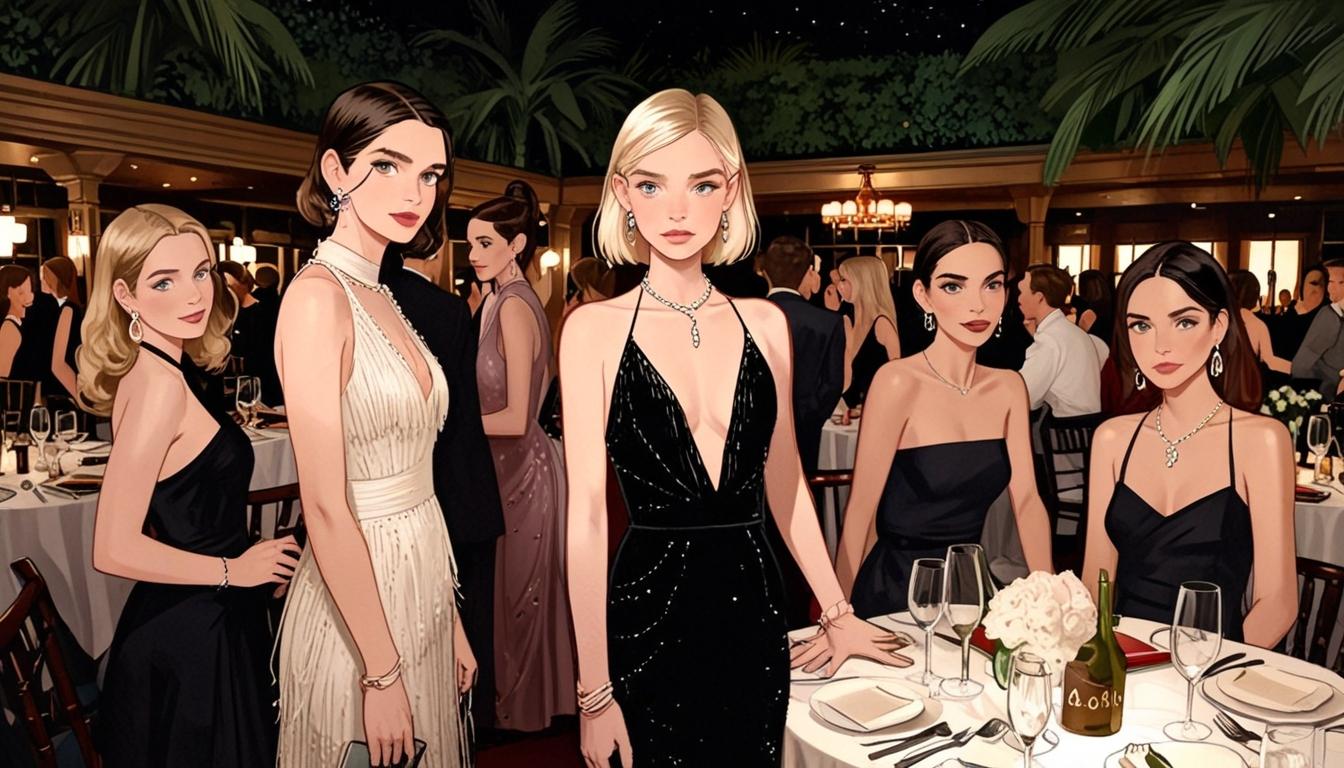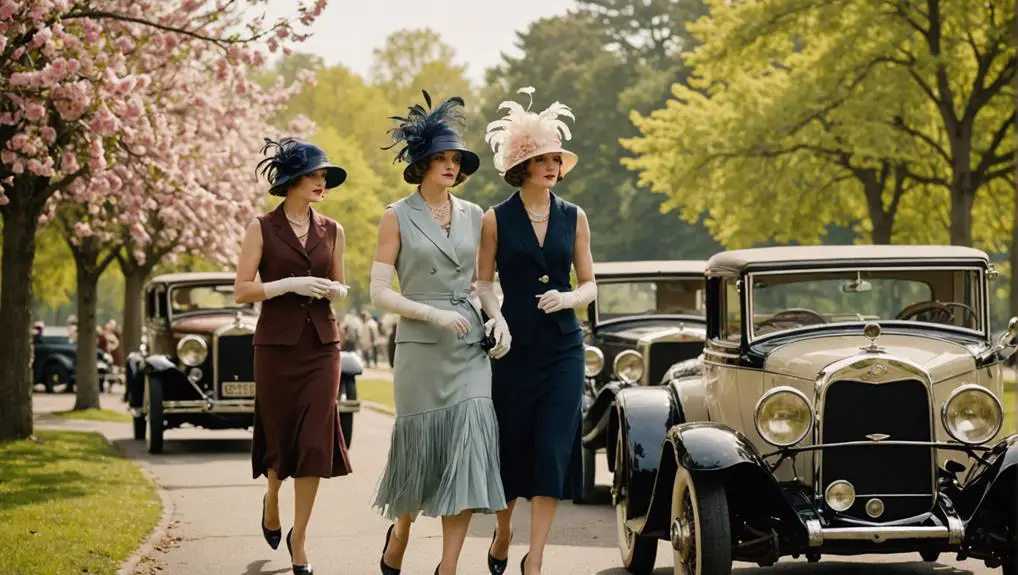When you think about the outfits in "Licorice Pizza," it's hard not to appreciate how they reflect the vibrant 1970s while shaping the characters' identities. Alana's wardrobe, with its striking brown minidress and playful floral prints, not only speaks to her journey but also taps into a nostalgia that's resurfacing in modern fashion. You might wonder how these costume choices influence the film's narrative and cultural conversations today. Exploring this could reveal more than just style—there's a deeper connection at play that merits further examination.
Overview of Licorice Pizza Outfits

The outfits in "Licorice Pizza" serve as a visual time capsule, transporting you straight to the vibrant 1970s. Costume designer Mark Bridges meticulously crafted each ensemble, ensuring that about half were sourced as vintage pieces while the other half was custom-made to reflect the iconic 1970s aesthetic. As you immerse yourself in the film, you'll notice how Alana Kane's signature brown minidress, worn during her first meeting with Gary, symbolizes her character's hesitation while perfectly embodying the fashion trends of the era. The intricate tailoring techniques for tops and dresses, such as adjustments for a tailored shape, enhance the outfits' fit and style, adding depth to the characters' visual narratives.
The wardrobe choices go beyond mere aesthetics; they play a significant role in character development. For instance, Alana's waterbed logistics look, featuring a vintage-inspired "You've come a long way, baby" T-shirt paired with bell-bottoms, illustrates her evolving identity and adds depth to her character. The film bursts with floral prints, oversized collars, and vibrant patterns, showcasing the cultural style of the 1970s while simultaneously influencing contemporary fashion trends.
These costume choices not only capture the essence of the decade but also evoke a sense of nostalgia that resonates with viewers. This emotional engagement is vital, as it helps you connect with the characters and their journeys. In "Licorice Pizza," the outfits truly enhance the storytelling, making every scene a delightful visual experience. You'll find yourself appreciating how the 1970s aesthetic brings the story to life, leaving you yearning for more of Alana and Gary's adventures.
Key Outfit Highlights
Highlighting the standout outfits in "Licorice Pizza" reveals how fashion intricately weaves into the characters' narratives. Alana Kane's brown minidress, worn during her first encounter with Gary, perfectly captures her initial hesitation while aligning with the bold 1973 fashion trends. This piece sets the tone for her character, hinting at the complexities beneath her stylish exterior. Vintage pieces like Alana's outfits often reflect the era's unique characteristics and can be identified through specific design elements and tags, showcasing the importance of identifying vintage clothing.
As you dive deeper into Alana's wardrobe, her school picture day outfit emerges as a delightful nod to iconic 1970s aesthetics. Featuring a short white skort, a light-blue polo, and white heeled sandals, this ensemble draws inspiration from beloved TV shows like The Brady Bunch, illustrating her youthful exuberance.
On her first date, Alana opts for a collared button-up brown-floral minidress paired with low-heeled knee-high brown boots, symbolizing her evolving identity as she navigates romance and self-discovery. Later, during her time as a waterbed salesman, she rocks a "You've come a long way, baby" T-shirt and bell-bottoms, a clever reference to a popular 1970s cigarette campaign aimed at empowering women.
In the unforgettable audition scene, Alana dazzles in a red babydoll dress, a striking representation of her dreams of becoming an actress while reflecting the era's fashion ethos. These outfits not only define her character but also transport you back to the iconic 1970s, making "Licorice Pizza" a visual feast for fashion lovers.
Tips for Recreating Alana's Style
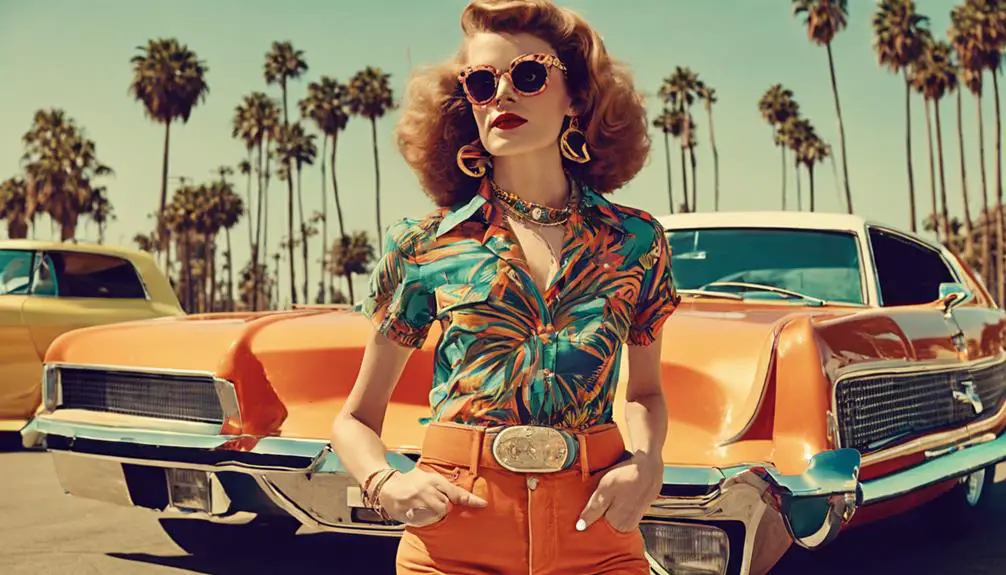
Recreating Alana's style is all about embracing the vibrant spirit of the 1970s. To start, explore vintage items that reflect this eclectic era. Thrift stores, online platforms like Poshmark, and sites like Etsy are treasure troves for unique finds that capture the essence of 1970s fashion. Key pieces to hunt for include floral prints, knee-high boots, and bell-bottoms, which are staples in Alana's wardrobe, radiating her casual yet chic aesthetic. You might also consider incorporating upcycled vintage pieces into your outfits for a sustainable twist, as upcycling revitalizes vintage clothing while promoting individuality.
Don't shy away from experimenting with layering techniques, as they're vital in achieving that perfect 70s vibe. Think about pairing a fitted turtleneck under a flowy floral dress or a denim jacket over a colorful maxi skirt. Bold color combinations are also essential; mix and match hues that make your outfit pop and reflect the boldness of the decade.
If you're feeling crafty, consider DIY approaches to create custom outfits. Learning some basic sewing skills can be a game changer, allowing you to tailor vintage patterns that closely resemble the iconic looks seen in "Licorice Pizza." Focus on fabric choices that embody the 70s aesthetic while ensuring comfort and wearability.
Costume Design Process
Costume design played a pivotal role in bringing the vibrant world of "Licorice Pizza" to life, mirroring Alana's style while capturing the essence of the 1970s. Under the keen eye of costume designer Mark Bridges, the film's wardrobe became a vital element in enhancing character development and evoking nostalgia. To achieve this, approximately half of the costumes were sourced as vintage pieces, while custom-made items were crafted to reflect the characters' economic backgrounds and the iconic 1970s aesthetic. The use of vintage clothing identification techniques guaranteed that authentic pieces were accurately represented in the film.
Given the challenges posed by COVID-19, the design process leaned heavily on Los Angeles rental houses, offering a treasure trove of 1970s garments. These rental houses, alongside vintage dealers, provided unique finds that added authenticity to the film's wardrobe. Alana Haim collaborated closely with Bridges to guarantee that her character, Alana Kane, was adorned in outfits that felt both true to the era and personally resonant.
Every piece was meticulously tailored, emphasizing comfort and practicality, allowing the costumes to enhance storytelling without distraction. The thoughtful selection of clothing choices not only reflected the cultural references of the time but also played a significant role in immersing the audience in the film's nostalgic atmosphere. By blending vintage finds with custom creations, the costume design in "Licorice Pizza" not only showcases the beauty of the 1970s but also creates a rich visual narrative that connects deeply with viewers.
Cultural Impact of Fashion Choices
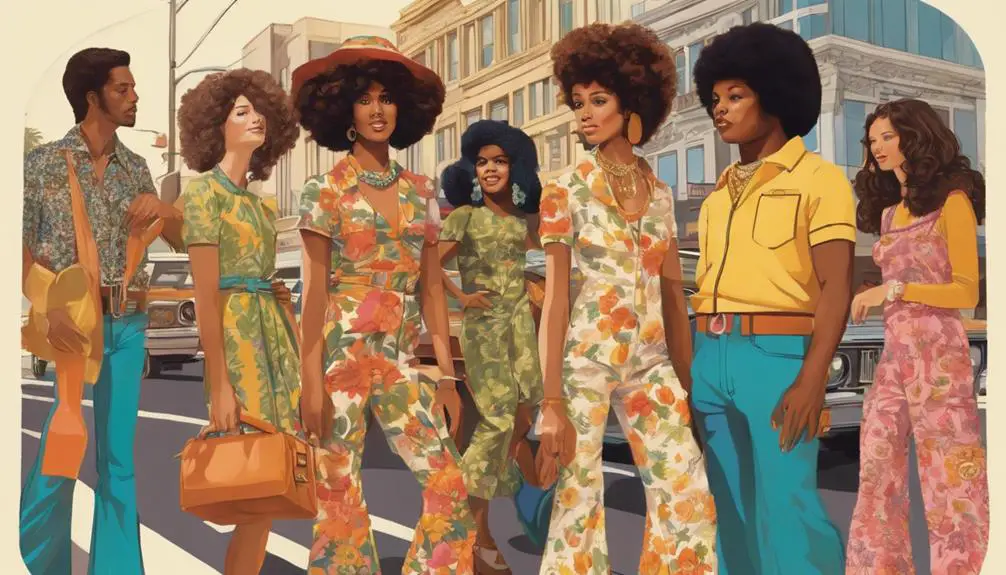
Fashion in "Licorice Pizza" serves as a vibrant lens through which audiences can explore the carefree spirit of the 1970s. Paul Thomas Anderson's film captures the essence of the era with fashion choices that blend authenticity and nostalgia. Costume designer Mark Bridges expertly combines vintage styles with custom designs, creating an aesthetic that resonates with both the past and today's modern viewers.
Take Alana's iconic brown minidress, for instance. This striking piece has gained significant attention on resale platforms, showcasing how the film influences contemporary fashion consumer behavior. The bold patterns and vibrant colors featured throughout the film have sparked a revival of 70s-inspired trends in current fashion collections, making the era more relevant than ever.
Moreover, "Licorice Pizza" fosters a cultural dialogue around the importance of fashion in storytelling. Each character's wardrobe not only reflects their personality but also engages viewers in a visually enthralling experience. As you watch, you can't help but notice how the fashion choices enhance the narrative, making the story feel relatable and immersive.
This cultural impact extends beyond the screen, inspiring individuals to embrace vintage aesthetics in their everyday lives. The film encourages a fresh appreciation for the unique styles of the 70s, proving that fashion isn't just about clothing; it's a powerful vehicle for storytelling and connection. So, whether you're inspired to thrift for vintage pieces or incorporate 70s-inspired trends into your wardrobe, "Licorice Pizza" has certainly left its mark on the world of fashion.
Frequently Asked Questions
What Is the Controversial Scene in Licorice Pizza?
The controversial scene highlights the age difference between Alana and Gary, provoking audience reactions. It explores character dynamics and cultural references, raising critical perspectives on narrative choices and the portrayal of sensitive themes within cinematic context.
Is the Girl in Licorice Pizza Actually 25?
You might notice the age debate surrounding Alana's character. The casting choices create intriguing character dynamics, challenging audience perception and societal norms, while the behind-the-scenes decisions add layers to the film's realism and age differences.
Who Is the Costume Designer for Licorice Pizza?
The costume designer for "Licorice Pizza" is Mark Bridges. He draws costume inspiration from 1970s fashion, ensuring character aesthetics and wardrobe choices reflect the setting influence while maintaining historical accuracy throughout his meticulous design process and style evolution.
Why Is Licorice Pizza so Highly Rated?
"Licorice Pizza" scores high due to its nostalgic themes, strong character development, and unique cinematographic style. The soundtrack influences emotions, while cultural references resonate with audiences, leading to critical acclaim and a positive reception overall.
